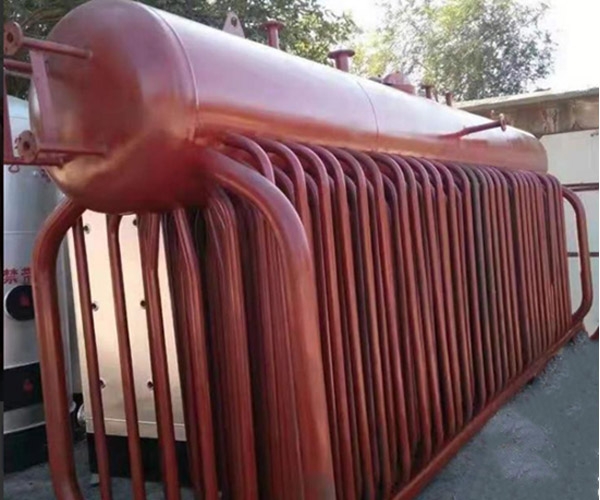Waste heat boiler is one of the main means of waste heat recovery, which is characterized by unstable heat load, large dust content in flue gas and corrosive flue gas. Formation mechanism of ash deposition and corrosion, and prevention of ash deposition and corrosion. At present, most of the waste heat power generation boilers at the kiln head and kiln tail of domestic cement plants have not been cleaned during 4-8 years of use. With the extension of unit operation, ash scale will gradually deposit on the surface of the furnace, mainly the incomplete combustion ash, which is composed of oxides of sulfate, calcium, magnesium, silicon, nickel, vanadium and other elements. Its deposit thickness is related to the operation time of the operating unit.
Waste heat boiler of cement plant Some ash deposits will occur on the heating surface of the boiler in the low temperature zone and form on the back of the pipe. They will form on the front of the pipe only when the smoke speed is very small or the smoke particles are very fine. This kind of ash will deteriorate the heat transfer effect, but it is easy to remove it by mechanical ash removal method. It is formed when there are many low melting point metal elements in the flue dust. The oxides or sulfides of these metal elements are mostly gaseous in the high-temperature flue gas. When the flue gas temperature decreases, it forms condensate, which becomes a substance with strong adhesion. With strong adhesion, it is easy to form a closed ash ring, which can be cleaned by rapping and purging. It occurs in high temperature area and "transition temperature area". When the flue gas washes the pipe laterally, it is mainly formed on the front of the pipe, which will cause the flue gas resistance to increase rapidly until the flue is completely blocked and the boiler is shut down. Cohesive ash deposition is caused by the melting or viscous state of soot particles, or it may be caused by the chemical reaction between active solid particles and some components in the flue gas, and secondary physical and chemical processes occur on the ash deposition layer. This kind of ash deposition is very harmful and needs careful study and treatment. Once it exceeds the process requirements, it will seriously affect the normal production of the device and cause direct economic losses to the enterprise.
Waste heat boiler of cement plant Dry scale removal method can directly remove scale on site by taking advantage of downtime, without affecting production. The cleaning medium is non-toxic, harmless to human body, and does not pollute the environment. After cleaning, there is no residual cleaning medium and no secondary waste pollution. The cleaning medium is non-conductive, easy and safe to operate, and can prevent employees from being in a dangerous working environment. The hardness of dry ice particles is low, the wear of metal surface is small, and there is no damage. The cleaned surface does not need rust prevention treatment, which simplifies the cleaning process. The nozzles at different angles can be replaced to remove dirt: dust, oil, surface coating, carbon deposit, surface residue, ink, rubber and other dirt.


